4A0-113 Nokia OSPF Routing Protocol Exam Free Practice Exam Questions (2025 Updated)
Prepare effectively for your Nokia 4A0-113 Nokia OSPF Routing Protocol Exam certification with our extensive collection of free, high-quality practice questions. Each question is designed to mirror the actual exam format and objectives, complete with comprehensive answers and detailed explanations. Our materials are regularly updated for 2025, ensuring you have the most current resources to build confidence and succeed on your first attempt.
Click the exhibit button.
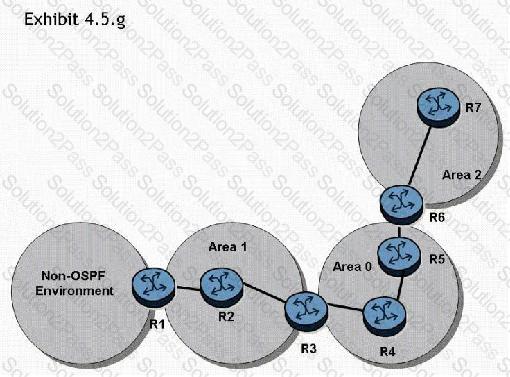
In the topology shown, router R1 is an ASBR configured to export external routes to OSPF. Assuming that there are no stub networks, which of the following statements regarding type 4 LSA generation is true?
Which of the following LSA types stay within an OSPF area, and are not flooded outside of the area? Choose two answers.
If a Router originates a type 1 router LSA with the E bit set, what types of areas can it belong to? Select all that apply.
In an OSPF environment, what must a router receive after it sends out an update?
Click the exhibit button.
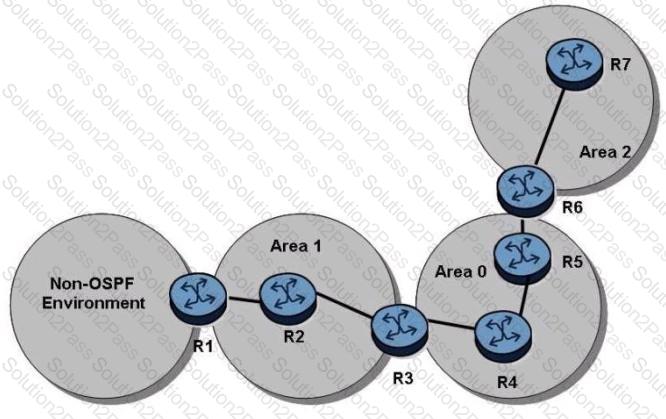
In the topology shown, router R1 is an ASBR configured to export external routes to OSPF. Assuming that there are no stub networks, which of the following statements regarding Type 4 LSA generation is true?
Which of the following statements concerning OSPFv3 is false?
A static route is created using the command "static-route 0.0.0.0/0 next-hop 3.3.3.1". What command could be used to test the static route on a Nokia 7750 SR?
Click the exhibit button.
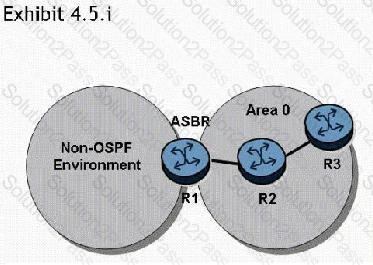
In the topology shown, router R1 is an ASBR configured to export external routes to OSPF. How many type 4 LSAs will be present in the network?
Which of the following statements apply to link state protocol behavior? Choose three answers.
What are the ways the RID can be created on a Nokia 7750 SR router? (Choose three)
Click the exhibit button.
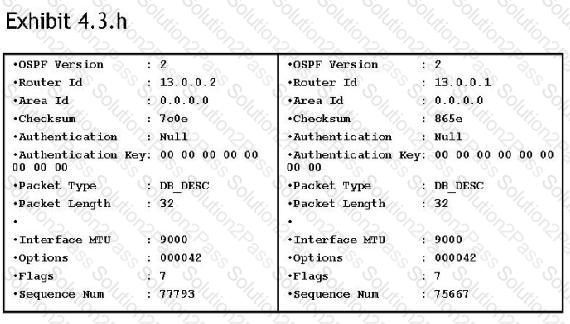
The OSPF packets shown have been exchanged between two neighbors. What state is the OSPF adjacency in?
Which of the following are similarities between OSPF and IS-IS? Choose two answers.
Click the exhibit button.
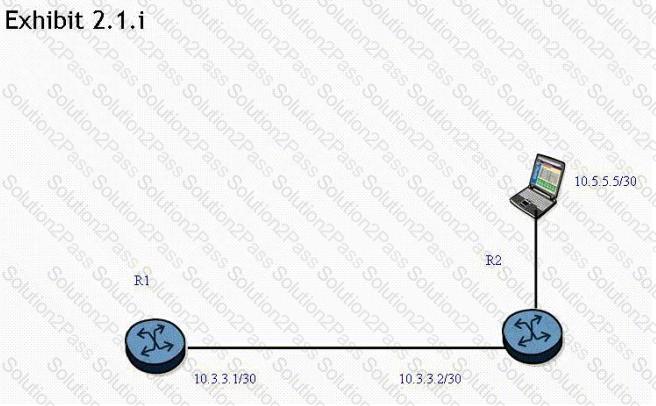
A static route is created on router R1 "using the static-route 0.0.0.0/0 next-hop 10.3.3.2" command. What command can be used to test the static route on an Nokia 7750 SR?
Exhibit
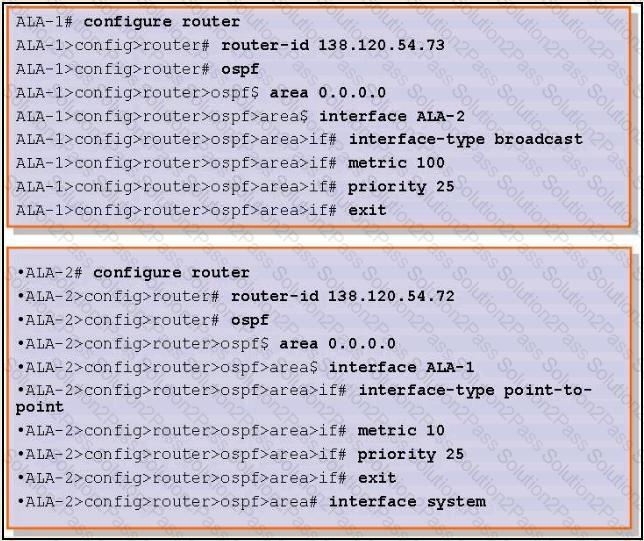
Given the two configurations shown, identify the two incorrect statements below: (Choose two)
Which of the following types of networks are supported on a Nokia 7750 SR for OSPF? Choose two answers.
In an IP datagram, which field identifies the receiving application?
The Nokia 7750 SR supports which two of the OSPF area types below?
Click the exhibit button.

What can you deduce from the show command on router R6?
What are some of the characteristics of Nokia's implementation of non-stop routing? (Choose two)
Click on the exhibit.

The route table on router R2 shows the system address of router R5 but it does not show any of the interfaces from the non-OSPF area.
What may be causing this?
